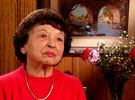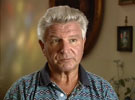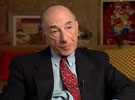Würzburg During the Holocaust
The Jews of Würzburg 1933 - 1938
 Würzburg, 11 March 1933. A demonstration of several hundred Würzburg residents against Jewish businesses.
Würzburg, 11 March 1933. A demonstration of several hundred Würzburg residents against Jewish businesses.
 Würzburg on "Boycott Day", 1 April 1933. A parade of SS men in the city’s streets.
Würzburg on "Boycott Day", 1 April 1933. A parade of SS men in the city’s streets.
 Würzburg on "Boycott Day", 1 April 1933. SS and SA militiamen next to a truck bearing banners calling to boycott Jewish businesses. One of the banners reads "The Jews are our Disaster" (Die Juden sind unser Unglück).
Würzburg on "Boycott Day", 1 April 1933. SS and SA militiamen next to a truck bearing banners calling to boycott Jewish businesses. One of the banners reads "The Jews are our Disaster" (Die Juden sind unser Unglück).
![Würzburg on "Boycott Day ", 1 April 1933. An SS man stands in front of a Jewish business, which is blocked by a sign calling shoppers to boycott the store. The sign reads: "Fight the [Jewish] Department Stores ". Würzburg on "Boycott Day ", 1 April 1933. An SS man stands in front of a Jewish business, which is blocked by a sign calling shoppers to boycott the store. The sign reads: "Fight the [Jewish] Department Stores ".](images/during/04s.jpg) Würzburg on "Boycott Day ", 1 April 1933. An SS man stands in front of a Jewish business, which is blocked by a sign calling shoppers to boycott the store. The sign reads: "Fight the [Jewish] Department Stores ".
Würzburg on "Boycott Day ", 1 April 1933. An SS man stands in front of a Jewish business, which is blocked by a sign calling shoppers to boycott the store. The sign reads: "Fight the [Jewish] Department Stores ".
 Würzburg on "Boycott Day", 1 April 1933. An SS man stands in front of a Jewish business. The sign reads: "The Jewish Department Store has Ruined the Small German Businesses".
Würzburg on "Boycott Day", 1 April 1933. An SS man stands in front of a Jewish business. The sign reads: "The Jewish Department Store has Ruined the Small German Businesses".
In 1933 there were 2,145 Jews living in Würzburg; they amounted to two percent of the city’s population. Some two thirds of the Jewish population worked in commerce. The Jewish community operated two synagogues – one for immigrants from Eastern Europe – as well as a community center, a ritual bath and a cemetery. The rabbinate of Würzburg covered 18 communities. The chief rabbi of the district was Rabbi Dr. Sigmund (Shimon) Hanover. There were seven charitable organizations which operated in Würzburg, together with 15 funds which dealt with supporting the needy. Würzburg was also home to branches of the CV (the Centralverein, Central Union of German Citizens of Jewish Belief), the Histadrut labor federation and other Zionist organizations, the Reich Union of Jewish Frontline Soldiers (Reichsbund Juedischer Frontsoldaten), Jewish liberal and ultraorthodox organizations, professional organizations (such as the association for the training of Jewish nurses), and Jewish cultural associations (including the association for Jewish history and literature). 143 students studied at the local Jewish primary school, and the Jewish Teachers Seminary had 100 students, among them seven women. The Jewish community maintained a number of public libraries, including the library of the Teachers Seminary, which held a collection of valuable Jewish and Hebrew manuscripts.
From the very beginning of Nazi rule the Jews of the city came under attack; they suffered serious damages, including loss of life and property. On the 11th and 12th of March, 1933, anti-Jewish riots broke out in Würzburg. Jews were brutally beaten, the automobiles of Jewish traders were confiscated, and Jewish businesses were closed, on the order of the civilian authorities. That month, four Jewish lawyers were debarred from the German courts. Following the economic boycott of April 1st 1933, Jewish traders found themselves in a perilous situation. The Jewish community set up a "Committee for Help and Rehabilitation", which offered material aid alongside guidance and counseling on matters of professional training and emigration. The Jewish primary school took in those students who had been expelled by the general school system.
In July 1933 the Würzburg police raided all the Jewish organizations and foundations in the city. The Reich Union of Jewish Frontline Soldiers and the Jewish student organizations at the University of Würzburg were disbanded. After the initial shock of the first few months of life under the Nazi regime, the Jewish community revived somewhat. The Jewish youth organizations in Würzburg set up a rich program of lectures and extracurricular activities, including courses in Hebrew and other foreign languages. The youth movements also took an active part in professional training. The Jews of Würzburg continued to live as a community, aiding the weak and giving out interest free loans. In spring of 1934 the Jewish hospital was expanded, and an additional wing was added to the old age home for the Jewish elderly.
In 1934 the financial measures against the Jews were sharpened. During spring of that year, a car equipped with loudspeakers, calling for German housewives to shop only in German businesses, would pass through the streets of Würzburg every day. Jewish businesses, clinics and lawyers’ offices were marked in the dead of night with placards calling for a boycott against them.
In 1935 a branch of the Cultural Union of German Jews (the Kulturbund) began to operate in Würzburg; it was responsible for producing a series of lectures and performances by Jewish artists in Würzburg and other German cities. In June of 1935, two years after it had been closed by the authorities, the local Zionist chapterhouse was allowed to resume its operations under the leadership of Emanuel Stolberg. That same year the persecution of the Jews was further exacerbated: Jewish businesses were plundered, decrees forbidding the sale of land to Jews were passed, and Jews from outside of Würzburg were forbidden to settle in the city. The chapterhouse of the “B’nai B’rith” association, whose activities had already been halted in July 1933, was now officially closed, and the building was handed over to the municipality. The Jewish primary school opened classes devoted to professional training, and in 1936 its students numbered 180.
In 1936 the Bavarian Students’ Association forbade its members to rent rooms from Jews in Würzburg. The passports of wealthy Jews were confiscated and returned to their owners only after the exit permits had been stricken from them, in an attempt to prevent Jews from escaping the country with their property. All city streets in Würzburg which had been named for Jews were renamed, excepting only streets with historical names inside the former Jewish ghetto. In 1937 Jews were forbidden from entering the municipal swimming pool. That year the Jewish community held a seminar in Würzburg for the representatives of the Jewish Youth Organizations in Bavaria; sports contests were held in the city between Jewish youth from Würzburg and their comrades from Munich.
The community institutions continued to provide Jews with material assistance, instruction, professional advice, and interest free loans until 1938.





